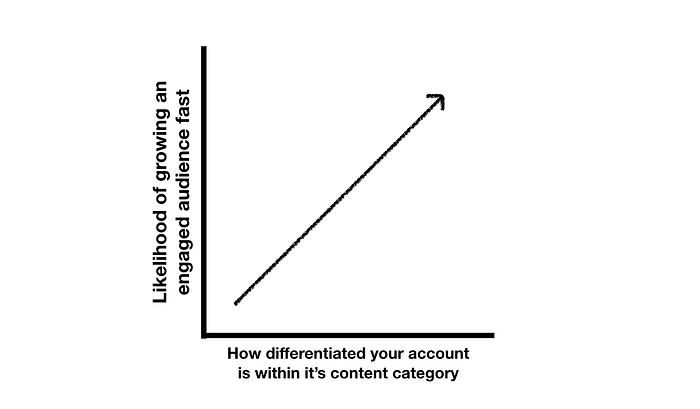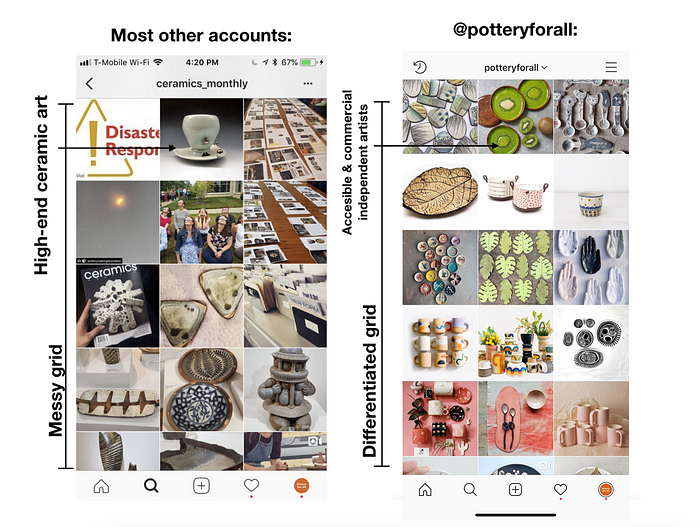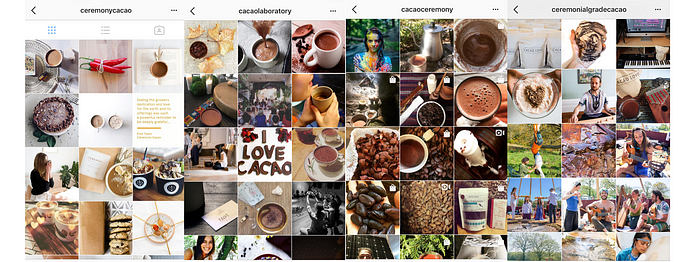I make a living from my Instagram accounts and I teach people how to do it too. But lately, I’ve noticed a growing frustration within most people trying to build an audience on the platform. It goes something like this:
“I’m doing everything the experts suggest to grow my Instagram — I post consistently and at the right times, I use the most relevant Instagram hashtags, I create engaging content, and I optimize for the ever-changing Instagram algorithm— and yet, my Instagram account STILL isn’t growing!”
For most of us, this problem usually leads to digging even deeper into the endless stream of Instagram-related tips, tricks and “hack” articles, claiming to have that ONE key insight for breaking through the new Instagram algorithm and finally growing your Instagram.
Unfortunately, in most cases, the results remain the same — you spend a lot of time and resources on Instagram, but see no significant results (check out my article about Is Instagram dying? to learn more about why this is happening to more and more people).

Sound familiar? If so, I hate to break it to you, but you should stop looking.
There is no ONE key to growing your Instagram, and your lack of growth isn’t because of the new Instagram algorithm change.
If you’re already implementing all of the Instagram best-practices and your account isn’t growing, there’s a deeper issue that no tip, trick or “hack” article will show you how to solve.
I tell you this because I’ve been there too…
Over the past two years, I’ve started over 20 Instagram repost accounts with the intent of growing an audience…and guess how many of them are successful? Five. (They are @pinlord, @potteryforall, @macramemakers, @pleasantlygreen and @coffeeselector).

Yes, only 5 out of 20 Instagram accounts I’ve started have actually developed an engaged audience at a fast pace.
That number used to drive me crazy! I couldn’t understand it…
I was implementing the same Instagram best practices on all 20 accounts but they didn’t work for 15 of them?! I was clearly missing something…
After spending countless hours/weeks/months testing and tweaking new growth strategies on a bunch of the non-successful 15 accounts, and seeing little to no results, I started to lose hope.
Like many of us in the “I’m doing everything the experts tell me but I’m still not growing” situation, the problem wasn’t that I didn’t have enough information about how to grow an Instagram or that I didn’t execute the strategies well enough (I had already replicated success several times), the problem was that I was trying to grow 15 Instagram accounts that just weren’t likely to grow regardless of how well I executed the best practices.
How did I come to this conclusion?
Instead of focusing on why each account wasn’t growing, I turned my attention to the Instagram “content niche” they were in (content niche = the type of content it’s known for. For example, @sunnysulli would be in the female soccer personality niche, @pinlord would be in the enamel pin reposter content niche, @emmachamberlain_ would be in the teen Youtube personality niche). When looking at my accounts in this context, why some grew and some didn’t make complete sense.
Here’s what I discovered…
When you’re already executing all of the Instagram-best practices, the likelihood of creating an Instagram with a fast-growing engaged audience usually depends on:
1. The phase your Instagram niche is in and the number of similar content creators within it.
If you’re in a mature or decline-phase niche, you simply won’t grow and monetize sustainably, pretty much regardless of what you do. It’s a hard pill to swallow, but it’s true and I highly recommend reading my article about Instagram niches and their phases to understand the concept thoroughly. How many other Instagram accounts are talking about and creating content about the same (or very similar) topic you are? The higher the number of accounts with comparable content within your content niche, the lower the likelihood of your account rapidly growing an organic audience, relative to the others.

This became clear when I compared the number of similar accounts in the content categories of my 5 high-growth accounts vs my 15 low-growth accounts. The 15 low-growth accounts were all in “popular” Instagram communities that already had a lot of accounts talking about the same topic in a similar way I was. The 5 high-growth accounts were all in niche (much smaller and specific), growing communities that didn’t have many other accounts creating content in a similar way.
Example: I started @yogaselector because Yoga is a vast content community that I thought I could easily stand out and grow in. However, there are many other similar Yoga-related accounts people could choose from and it only grew around 6,000 followers in 6 months.
In contrast, during that same week, I started @macramemakers. It was one of only a handful of accounts creating similar content within the niche (but growing) niche of macrame art, and it grew around 25,000 followers in 6 months.
So why did @macramemakers grow so fast and @yogaselector didn’t? It wasn’t because @macramemakers had better hashtags or was posting at better times, it was because it didn’t have many other content creators to compete within their niche and @yogaselector did.
How do you measure how many content creators there are in a niche? Although this can be tricky since you don’t have complete information about everyone on Instagram, an effective first-measure is looking at the number of posts within a main hashtag of the content niche you’re analyzing.
For example, I want to start a new Instagram account to grow an audience but I’m not sure what topic I want to focus on yet. Three topics that interest me are yoga, macrame and cacao ceremonies (weird tastes, I know…). I search for a main hashtag in each of these categories and these are the numbers that show up:

#Yoga has over 51,000,000 posts, #macrame over 1,300,000 posts and #cacaoceremony only slightly more than 14,000.
If I implement all of the Instagram best practices, in which of these categories would I have a higher likelihood of growing an engaged audience fast?
By far, I’ll have a higher likelihood of creating a high-growth account within the Cacao Ceremony niche in comparison to the other ones.
Although not a perfect measure, just by the number of posts in one of the main hashtags I can tell that there are a lot more people creating content around the yoga and macrame categories, which usually means that there will be many other high-quality content creators within that niche. The higher the number of similar high-quality content creators, the higher the likelihood that people will pick another account over mine.
Recommendation: If you’re interested in becoming the next “big” fashion or food blogger…good luck. There are literally millions of talented and experienced content creators posting about that topic already, so unless you realistically have an ultra-differentiated point of view within that niche, your chances of starting an account with a high-growth organic audience in a popular niche like that are slim to none.
Instead, focus on starting accounts in niche communities that are steadily growing, like cacao ceremonies or bonsai trees. You can also create a new sub-niche within a big one or even better, just start your own (a personality is technically in a niche of one if you’re creating unique content). The fewer the number of accounts people can substitute you with, the higher your chances of success.
2. How differentiated your account is within its content niche.
In other words, how unique/valuable/interesting is your account in comparison to other similar accounts within your content niche? The more clearly differentiated your account is, the higher the likelihood of it rapidly growing an organic audience, relative to the others.

This became clear when I compared the level of differentiation of my 5 high-growth accounts vs my 15 low-growth accounts within their categories. It’s not that my 15 non-successful accounts weren’t differentiated…they were, but they weren’t differentiated enough.
In content categories with a high number of content creators, the likelihood of creating a clearly differentiated account that will stand head and shoulders above the rest is extremely unlikely (and very very hard). In comparison, not only were my 5 high-growth accounts all in niche communities, but they were also highly visually differentiated in comparison to most similar accounts within their niche. This compounded their rate of growth.
Example: The ceramics community was already large on Instagram and there were already a bunch of accounts that reposted artists’ work when I started @potteryforall (a ceramics reposter). Why did it grow so quickly? @potteryforall grew quickly because it was a highly differentiated account. When I started it, all other ceramic reposters were posting about more traditional high-end ceramic art or pottery videos, and none of them paid particular attention to how their grid looked.
To differentiate @potteryforall, I focused on reposting the most visually attractive, accessible and shoppable work by independent ceramicists on Instagram. There only a handful of accounts reposting the work of this community (which made @potteryforall’s content unique), and most importantly, there were no other accounts that had a visually differentiated grid in the way I did.
Here’s how my grid looked in comparison to most other pottery reposters when I started:

Within 8 months, @potteryforall (on the right) grew to over 50,000 followers. It took the non-differentiated account (on the left) 3 years to reach that same threshold.
The difference? My account was much more clearly differentiated than other similar accounts when I started it.
How do you measure how differentiated you need to be within a niche? The best way to understand what sort of content is “the norm” in a particular Instagram community is by doing research. Once you know what your content niche is, search for the accounts that have the largest, most engaged audiences within that community and study how they look. To have a fast-growth organic audience you’ll need to greatly improve upon all aspects of their content to be differentiated enough to garner a fast-growing organic audience.
As an example, we’ll use the Cacao Ceremonies topic again. This is how the content of the most successful Cacao Ceremony accounts on Instagram look:

To garner a high-growth organic audience within this niche, you’d have to create an account that is highly differentiated from these. How and what differentiation looks like is completely up to your imagination and skill.
Recommendation: There is no one way to create differentiated content (that’s the whole point of differentiation!), but a great first step is to visually distinguish yourself from other accounts. The most effective way to do that is to craft a differentiated visual grid.

How your account looks at first glance is often the only way people decide whether or not to follow you once they discover your account. The better you are at executing a differentiated visual grid that gives people real value, the faster you’ll grow!
Okay, so now that you know this information, what do you do!?
1. Stop wasting your time being frustrated about why your Instagram isn’t growing despite your best efforts at implementing everything “the experts” suggest.
2. Focus on creating highly differentiated accounts within categories that have a small number of similar content creators.
3. Chill…Instagram is not worth suffering for.

